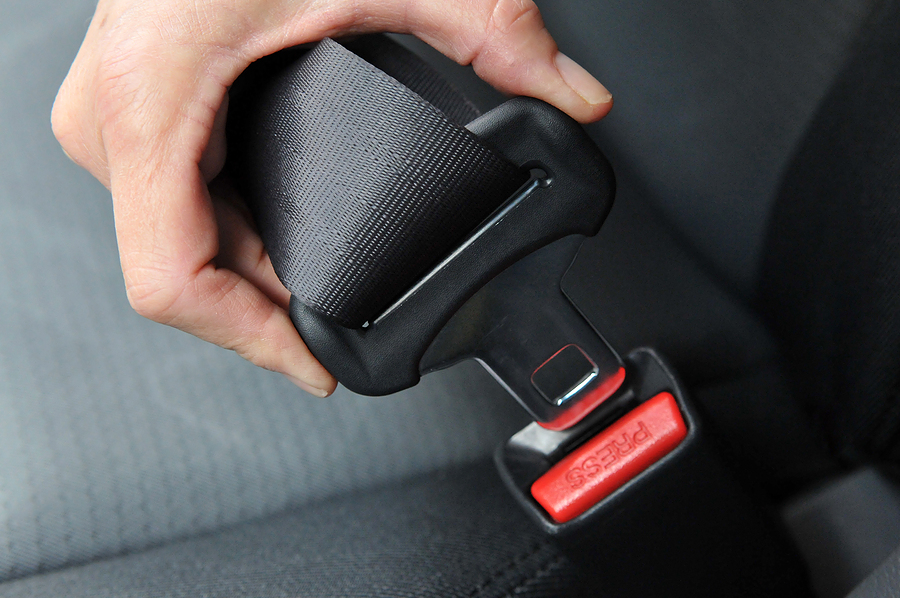A U.S. regulator’s offer to relax auto safety rules for manufacturers that install technology to prevent drivers from starting a car unless seatbelts are fastened drew swift opposition from safety advocates.
Cars featuring so-called seatbelt interlock devices would be given relief from U.S. design requirements that prevent injuries to unbelted passengers, National Highway Traffic Safety Administration chief David Strickland said on a conference call yesterday.
That resulted in criticism from Clarence Ditlow, executive director of the Center for Auto Safety, a Washington-based consumer group that advocates for tougher safety regulations.
“We are opposed to reducing the structural integrity of motor vehicles,” Ditlow said in an interview. “This is a tried and proven safety standard. It saves lives.”
If there were a way to verify that all car passengers were wearing seatbelts, automakers might be able to remove some structural steel, Strickland said. That would help the industry meet requirements to boost fuel economy, among other things, he said.
Strickland proposed the trade-off yesterday to get the technology into the U.S. fleet faster than by regulation. The seatbelt devices were one of three promising technologies NHTSA wants to induce automakers to adopt as soon as possible to save the most lives.
Seatbelt interlock technology has been around for decades. A push to require the systems in 1974 was so unpopular that Congress passed a law banning their installation a year later.
The U.S. surface-transportation law approved last year allows NHTSA to consider allowing vehicle manufacturers to count interlocks toward satisfying crash-test requirements, the agency said in a statement yesterday. NHTSA is looking at ways to make the systems tamper-proof and reliable.
‘Voluntary Route’
U.S. seatbelt usage would increase with adoption of interlock technology from 86 percent to almost 100 percent, according to NHTSA. When the agency first proposed mandatory interlocks in the 1970s, belt usage was 28 percent, according to a fact sheet from Public Citizen, a Washington-based consumer group.
“There are lots of reasons a manufacturer would find it advantageous to go the voluntary route,” Strickland said.
Wade Newton, a spokesman for the Alliance of Automobile Manufacturers, a Washington-based trade group, said companies are reviewing the proposal. Automakers have a long track record on working to increase seatbelt use, he said.
“We’ve spent a lot of resources building up safety belt use awareness and advocating for safety belt laws,” Newton said.
Alcohol Detection
NHTSA included the seatbelt proposal with two other technologies it’s pushing the auto industry to adopt.
Alcohol-detection systems would prevent drivers from starting cars if their blood-alcohol levels exceeded the legal limit, the agency said. In 2012, 10,322 people were killed in drunken-driving crashes, according to NHTSA. It didn’t specify whether incentives would be created for automakers to install the technology.
NHTSA officials have said sensors that help alert drivers to impending frontal crashes may save a significant number of lives. Some systems automatically apply brakes to avoid collisions or reduce crash severity. The agency may propose rules on ways to induce automakers to include the crash- avoidance systems in the U.S. fleet.
Automakers have expressed interest in voluntarily adding seatbelt interlocks, Strickland said. The car redesigns wouldn’t result in a lower degree of safety, he said.
“We have all the confidence that there won’t be backsliding,” Strickland said. “I feel very bullish about the engineering on this.”
–With assistance from Mark Clothier in Southfield, Michigan. Editors: Elizabeth Wasserman, Bernard Kohn
Topics USA Auto Legislation Tech Washington Manufacturing
Was this article valuable?
Here are more articles you may enjoy.



 Law Firm Faces Sanctions for Failing to Vet Ugandan Claims in $6B 3M Case
Law Firm Faces Sanctions for Failing to Vet Ugandan Claims in $6B 3M Case  Florida Lawmakers Ready for Another Shot at Litigation Funding Limits
Florida Lawmakers Ready for Another Shot at Litigation Funding Limits  SIAA Announces Strategic Partnership With Progressive
SIAA Announces Strategic Partnership With Progressive  10 Highest Class-Action Settlements in 2025 Eclipsed $70B Total: Duane Morris
10 Highest Class-Action Settlements in 2025 Eclipsed $70B Total: Duane Morris 

